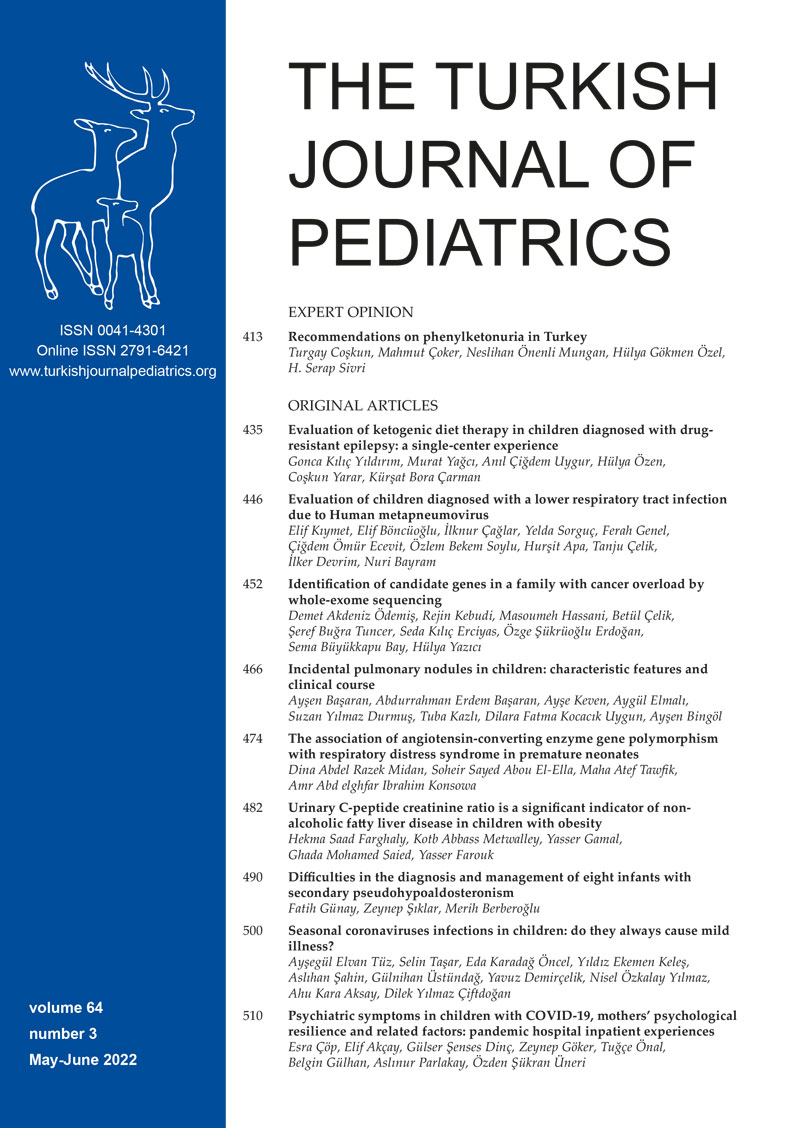Abstract
Background. Human coronaviruses (HCoVs) cause a comprehensive clinic ranging from asymptomatic course to pneumonia. We aimed to describe the HCoV infections in children to determine the clinical status and coinfection effects in a five-year retrospective surveillance study. The primary outcome was admission to the intensive care unit (ICU) and the secondary outcome was the need of high oxygen support.
Methods. Between September 2015 and November 2020, all patients whose reverse transcription polymerase chain reaction (RT-PCR) tests were positive were determined and patients with HCoVs were included in the study. Demographical characteristics, underlying chronic diseases, clinical diagnosis, laboratory data, subtypes of HCoVs, radiological findings, treatments, hospitalization, and ICU admission were analyzed.
Results. Of the 2606 children, the overall respiratory tract virus detection rate was 82.4%. Among these, 98 cases were HCoVs positive and of these 80 (81.6%) were under five years of age and most of the patients were admitted to the hospital in spring and 70% were a mixed infection with other respiratory viruses. Since lower respiratory tract infections are more common in HCoV coinfections, a significant difference was found in clinical diagnosis (p < 0.001). The presence of hypoxia (p=0.003) and underlying disease (p=0.004) were found to be significantly more common in patients admitted to the ICU. The presence of hypoxia, infiltration on chest X-ray, and elevated C-reactive protein levels were more frequently determined in patients who received high oxygen support (p=0.001, p=0.036, p=0.004, respectively).
Conclusions. Clinical findings may be more severe if HCoVs, which generally cause mild respiratory disease, are coinfected with another viral agent.
Keywords: HCoV, children, coinfection, lower respiratory tract infection, respiratory tract infections
Copyright and license
Copyright © 2022 The Author(s). This is an open access article distributed under the Creative Commons Attribution License (CC BY), which permits unrestricted use, distribution, and reproduction in any medium or format, provided the original work is properly cited.














